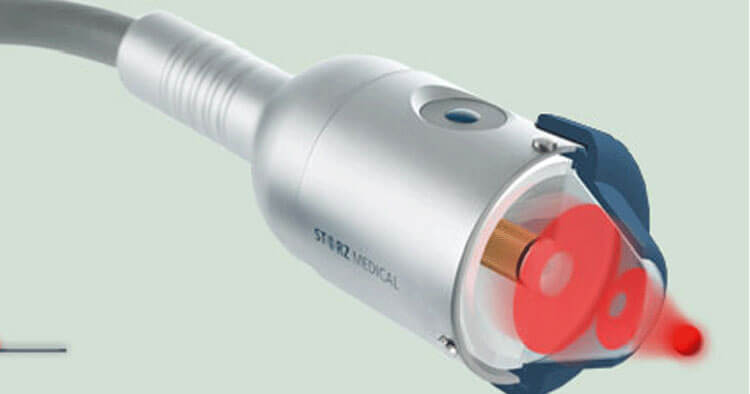Shockwave Therapy, Treatment Modalities and Aids
Radial Shockwave Treatment Verses Focused Shockwave
What Is The Difference Between Focused Verses Radial Shockwave Therapy?
Focused (ESWT) and radial (RSWT) shockwaves differ in a number of ways, the physical principles are different from the way they are generated, the energy and energy density of each wave as well as the therapeutic penetration depths into the tissue.
However in saying that the stimulation effects and therapeutic mechanism of ESWT verses radial shockwave treatment are fairly similar with radial shockwaves well suited for indications more near the surface of the body and for deeper target areas focused shockwave therapy seems to be favorable.
Radial Shockwave Treatment Has A Slower Wave Form
RSWT differs from the other forms of shockwave technology in a couple major regards. RSWT waves travel at speeds of approximately 10 meters per second much slower than ESWT wave speeds. The speed of RSWT waves does not break the sound barrier, and hence, no actual shockwave is produced with radial shockwave therapy which is different to that of ESWT.
Not only does the wave speed differ but so to does the wave form, focused shockwaves of ESWT are very short and very intense the radial shockwave waves are slower, less intense, elongated, and more sinusoidal in appearance. The focused shockwave used in ESWT is a special acoustic pressure wave characterised by a high positive pressure amplitude and an abrupt rise and short pulse duration. When the pressure wave amplitudes reach high values (typically 20-100 MPa), the steepening pressure wave becomes a shock wave.
- With radial shockwave therapy the waveform and traveling speed of the wave is very different and some consider it more accurately described as a pressure wave technology.
Focused Shockwave Therapy Bypasses The Skin
With ESWT the shockwaves and force produced in the machines is translated past the skin and superficial tissues without effect, and are instead focused at the desired tissue depth. Focused shockwave can be aimed and delivered past the skin to different tissue depths, allowing for delivery of the therapeutic waves at a specific depth.
In contrast RSWT is applied to the skin and the pressure waves are generated ballistically at the surface of the skin by radial pressure wave devices, the generated pressure wave then propagates divergently through the body.
With radial shockwave therapy this wave must dissipate through the superficial tissues prior to reaching the target tissues below, meaning deeper tissue injuries are therefore potentially more difficult to treat with radial shockwave therapy but the benefit of RSWT is that unlike some ESWT treatments anesthetic is not required for radial shockwave therapy sessions.
The Major Differences Between Focused And Radial Shockwave Treatment
- Radial shockwave therapy is effective at treating more superficial complaints.
- Focused shockwave therapy can specifically target deeper tissues.
- Focused shockwave therapy may require anesthetic prior to treatment where as radial shockwave therapy is only mildly painful and doesn’t require any anesthetic to be administered before application.
At Sydney Physio Clinic we use the DolorClast Master Touch radial shockwave treatment machine which doesn’t require any anesthetic to be administered prior to treatment session. In our practice we have found radial shockwave therapy to be more than satisfactory in addressing any musculoskeletal issues that walk through our doors. If we have a patient we feel requires treatment targeted at a deeper depth than what the standard DolorClast Master Touch standard Evo handle can provide we also have the DolorClast power handle that can achieve fantastic results at even greater depths. It is for this reason that we have never felt the need in our practice to acquire a focused shockwave machine.
Disclaimer: Sydney Physio Clinic provides this information as an educational service. The information contained on this website and in this blog is not intended to serve as or replace actual medical advice. Anyone seeking specific advice or assistance regarding radial shockwave treatment should consult their local physio, general practitioner, medical specialist, or otherwise appropriately skilled practitioner.



What is the depth difference between focused and radial? Depth of radial deep enough for plantar fasciitis, achilles tendonitis, etc??
Hi Dana, thanks for contacting. The depth of focused shockwave can be set to specific parameters, where as radial shockwave depth can depend on the machine used with the EMS dolorclast power handle the depth can reach around 5cm. Regardless with or without the use of the power handle, radial shockwave therapy is sufficient to effectively treat both plantar fascia and Achilles tendon complaints. At our clinic we have achieved very good results using radial shockwave on both these areas for a number of years.
Do you do shock wave therapy on men for ED if so how much does it cost